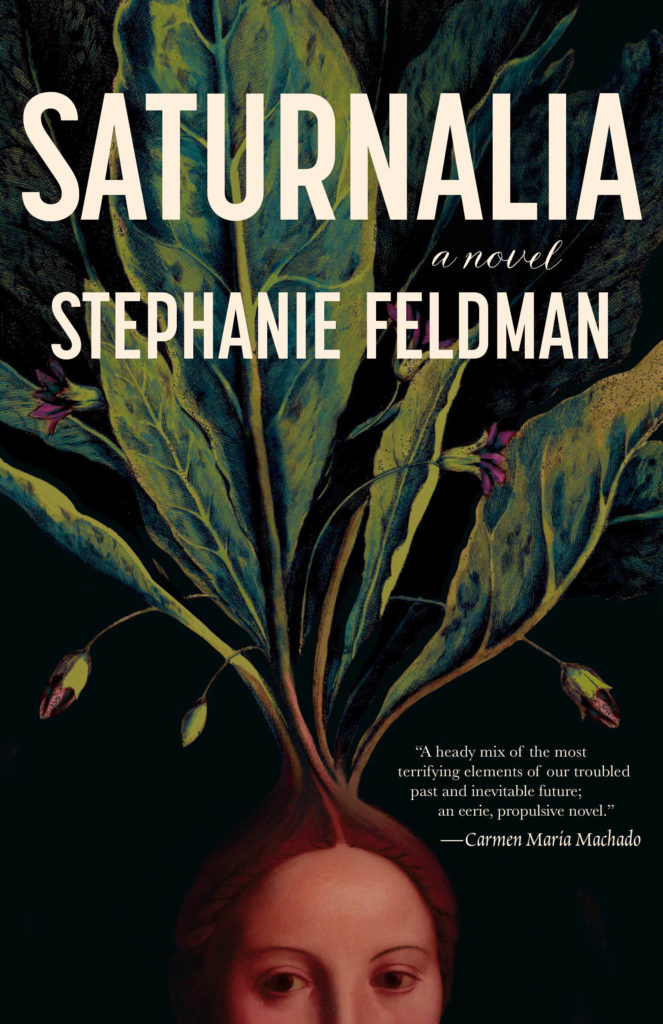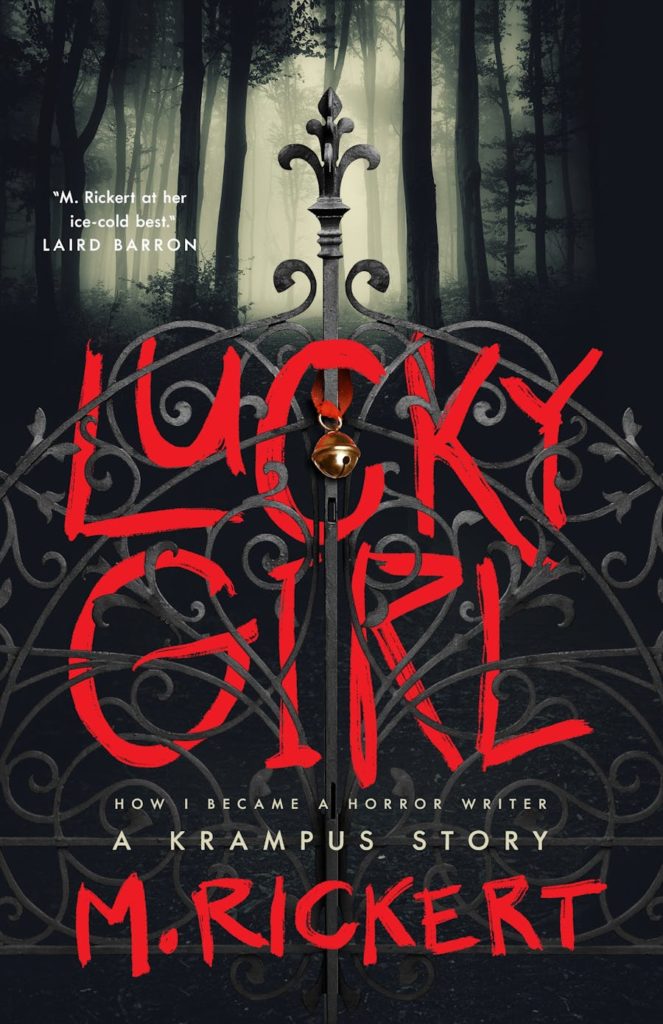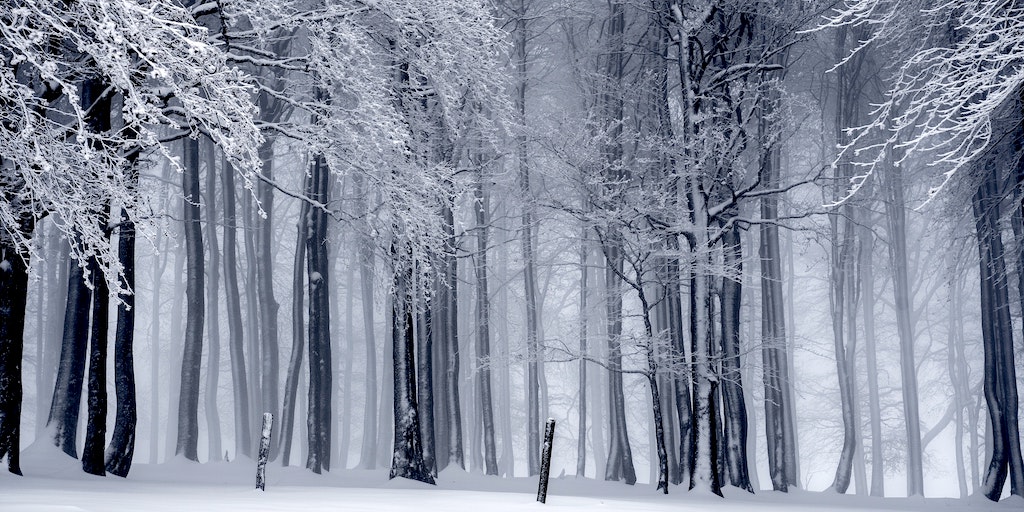Ghost stories at Christmas, the longest night of the year–the depths of winter are a natural time for horror stories to take root. Stephanie Feldman and M. Rickert both have new holiday-centric horror books out this year (Saturnalia and Lucky Girl: How I Became A Horror Writer, respectively), and we’re thrilled to have them in conversation with each other about traditions of holiday horror (both literary and personal), folklore, and layers upon layers of influences.
Stephanie Feldman: A few years ago, I learned about the English tradition of telling ghost stories at Christmas. I knew about Dickens’ A Christmas Carol, of course, but I didn’t realize it was rooted in centuries of observing winter as the true spooky season. It wasn’t until the past 100 years that Halloween stole Christmas’s thunder. But it makes sense for ghosts to prevail in December! The longest, darkest, coldest nights demand storytelling, and remind us that our fears are always close.
I was delighted, then, Mary, to discover your novella, Lucky Girl: How I Became A Horror Writer: A Krampus Story, in which a group of not-quite friends meets at Christmas to tell scary stories. How did you find your way into the Christmas horror tradition?
M. Rickert: It’s all very odd because I had been, for much of my adult life, an advocate of a sweet season, devoid of dark material. I think the first thing that crept in was after I watched the 2015 movie Krampus, which I loved. After that I started decorating with Krampus, and bought the excellent book by Al Ridenour, The Krampus and the Old, Dark Christmas Roots and Rebirth of the Folkloric Devil. Is it my age? I don’t know, but the sugary flavor of the holiday I used to celebrate no longer felt expressive of my sentiments. It might have been the deaths. I was lucky enough to experience so little death until my fifties when my parents and my husband’s parents and our pets and some people very dear to me died. At that point the holiday became populated by ghosts. I developed, quite organically, a tradition of walking to the cemetery on Christmas Eve night.
I think some people might find this all sort of morbid, but for me it ignites a tender feeling I actually rather enjoy. This way of celebrating feels right to me at this time in my life, as do these sort of stories.
Which is why I was so happy to read your novel, Saturnalia, filled with winter solstice blood and ceremony and myth and an apocalyptic future not so very different from the present we live in. How was your relationship to dark material formed? Did you ever struggle with it or was it always an easy union in your work as a writer?
SF: I grew up reading and watching horror, but it took time for me to return to it in my own work. I wanted to be “literary,” as if the modern English literary tradition doesn’t grow directly from the Gothic. Maybe this is my own “How I Became a Horror Writer” story.

When I started developing Saturnalia, I knew I wanted to write about rich folks partying while the world ends (shades of Poe’s “The Masque of the Red Death”), and that I wanted the story to take place over one night. That led me to the winter solstice, the longest night of the year, and to the ancient Roman winter carnival of Saturnalia. An American Saturnalia, though, would draw on world customs, just as all our culture does. My solstice festival has mummers (an old European, and contemporary Philadelphia, tradition), Chinese Dongzhi dumplings, Caribbean Junkanoo parades, and Scandinavian candle crowns. And lots of roasted meat, alcohol, and fire—these universal comforts for fending off darkness and cold. Horror and the Gothic are all about the persistence of the past, so it makes sense to return to old traditions.
I love this blending of places, past and present, folklore and imagination. I’m curious what parts of Krampus and other lore you incorporated, and what you invented, or how the legends inspired you to develop your own story.
MR: I loved finding that blend in Saturnalia, recognizing bits and pieces I had read about over the years enlivened through your characters and place. Honestly, I kept expecting to find an old velvet cape to wear and taper candles to light even as I read your book in the summer by the river!
I began writing my novel to gift as a Christmas story for my siblings. Once I get a feeling for what I want to write, I just start writing and see what happens. What happened is that this one kept growing longer and, though it’s actually a short novella, it soon became apparent I wasn’t going to finish it in time for the holidays. I’m not actually sure when I knew that the Krampus would be part of it, but I do recall that eventually I realized I had veered sideways from the material I had read about them, focusing on the lingering effects of their disturbing presence like a persistent stench that remains long after its source has been eradicated. One material aspect that I did consider was the bells that the Krampus carry. I am aware of how Christmas bells have associations with angels but wanted to use that instrument as a clarion call for evil because if someone suffered the sort of holiday tragedy Ro had, many aspects of celebration would serve as harbingers, reminders at least, of sorrow instead.
I am really captivated by what you said above regarding how Horror and the Gothic are about the “persistence of the past.” I was impressed with the way you dealt with this in regards to trauma in Saturnalia. Your novel includes aspects of a dark past wrapped in a horrifying future, all tied together in a disturbing present. Can you speak to the challenges and opportunities of writing about time in this way, and how it adds texture to a story that takes place in a single night?
SF: I have a couple short stories that began as Christmas ghost stories, too. Weird prompt for a Jewish girl, but I tend to keep things weird. Your observation about holidays as reminders of the past taps something in my Jewish soul, too. For us, the past is very much present, and cyclical. Our weekly and yearly rituals are a kind of historical reenactment. Every week, we read a successive portion of the Torah, only to start again with the creation story each fall. Each year, during Passover, we tell the story of the Exodus and imagine that we ourselves have been freed from bondage in Egypt. We remember through repetition and performance. This idea played a big part in my first novel, The Angel of Losses, which I thought of as a Jewish Gothic, though I’m not sure anyone else read it that way.
To be honest, I didn’t have any such lofty themes in mind when I decided to set Saturnalia over one night. It was more of a formal exercise or challenge; I wanted to see if I could do it, and hoped a formal limit would keep my story focused. When I decided to bring in Nina’s history, I had to start considering parallel stories, a past Saturnalia unfolding alongside the present Saturnalia. Lucky Girl also takes an interesting approach to time. It stretches over many years, but by giving us a sequence of Christmases. It also moves backwards into the past to reveal Ro’s history.
Both of our characters suffer a lot of trauma, but horror can be fun, too. You mentioned Al Ridenour earlier, and I’m a big fan of his podcast, “Bone & Sickle,” which explores literature and dark folklore. It always gives me great story ideas. Do you have any favorite spooky stories or legends, either about this time or year or to revisit during the fall and winter?

MR: I love Ray Bradbury’s Something Wicked This Way Comes, and The Halloween Tree. I just last year read Steve Rasnic Tem’s short story, Buzz, for the first time and plan to revisit it for sure. Almost every winter I read Dylan Thomas’s A Child’s Christmas in Wales. I still have the small tattered copy I was given as a gift from my dear friend more than forty years ago. I love it so much that I read excerpts of it to my mother on her death bed. It isn’t spooky in any traditional sense, but carries with it these associations with the passing of time and death. In keeping with that spirit I have developed a tradition where my friends and I take a Christmas Eve night visit to the cemetery where we sing a carol to the dead. It’s sort of lovely, really, but also does invoke that spooky feeling. I’ve always loved Dicken’s A Christmas Carol and return it almost every season, as my husband is well aware since I usually find some bit to read out loud to him with great enthusiasm as if I had never read it before. I also adore A Christmas Memory by Truman Capote–though most people would not consider it spooky, I consider it quietly haunted.
Stephanie, after I finished reading Saturnalia, I read The Angel of Losses. I thought it was beautiful. I didn’t necessarily think of it as Jewish Gothic while I read it, but I can easily agree that it is. I know many people define Gothic by the old material of castles and moors. I define it by its reach, human suffering as a foundation for transcendence. It does seem that our exchange here keeps circling back to the Gothic and I wonder what you feel the Gothic has to offer the Solstice or holiday fiction.
SF: I think of the Gothic in a very old-fashioned way, maybe—it’s a genre obsessed with lineage, patriarchy and gender, and nationality. (In the 18th-century originals, the English are super afraid of Italians, who represent a threat to Englishness.) That’s what The Angel of Losses is interested in: how our families and forebears haunt us, literally and figuratively, and how we define our cultural identities. Not a bad topic, maybe, for the time of year when families come together.
To me, Gothic is also a feeling—finding pleasure in terror, and terror in awe. Anything that overwhelms us, that’s bigger than our ability to comprehend—that creates the sublime, which is integral to early Gothic stories and novels. The philosopher Edmund Burke called the sublime the strongest emotion we can experience.
Recently, though, I’ve been thinking a lot about Mark Fisher’s The Weird and the Eerie, which investigates two other important sources of horror. His book is quite nuanced, but I’ll simplify here by defining the weird as the presence of something that shouldn’t be there, and the eerie as the absence of something that should be there. I expect there’s something both sublime and eerie about being in a graveyard on Christmas night. If it gets weird, you should probably make a run for it!
I think it’s really lovely, though, that you gather with friends for your cemetery visit. Maybe that’s the most compelling or inviting thing about telling ghost stories at Christmas. It suggests an intimate gathering, with focused speaking and listening instead of loud music or annoying small talk. Here’s another great winter tradition: Icelanders celebrate Jólabókaflóðið, or “Christmas book flood.” They give books as gifts and spend Christmas Eve reading. I’m going to start encouraging people to adopt this custom.
MR: Oh, I adore the idea of the Christmas book flood, and have been trying to introduce that to my family for years, though it’s never properly caught on. I am enough of an introvert that the idea of a Christmas Eve spent with dear friends all in separate corners, huddled under blankets eating chocolate and reading, sounds perfect to me!
It seems to me we are both drawn to the season for the opportunity it offers for reflection on the passing of time and those who pass with it, the very material of awe and terror that defines the Gothic reach.
Personally, I do so from the comfort of my unhaunted chair in my unhaunted house, a pot of tea poured out while we converse in this liminal space, free of paper or proximity, a form of communication our Gothic ancestors would likely find rather haunting, as if it is we, and not they, that are the ghosts. But I salute the last dregs of my cuppa tea to you, Stephanie, with this old toast, “Not dead yet, we drink!”




One thought on “The Longest, Darkest Night: Stephanie Feldman and M. Rickert on Holiday Horror”
Comments are closed.